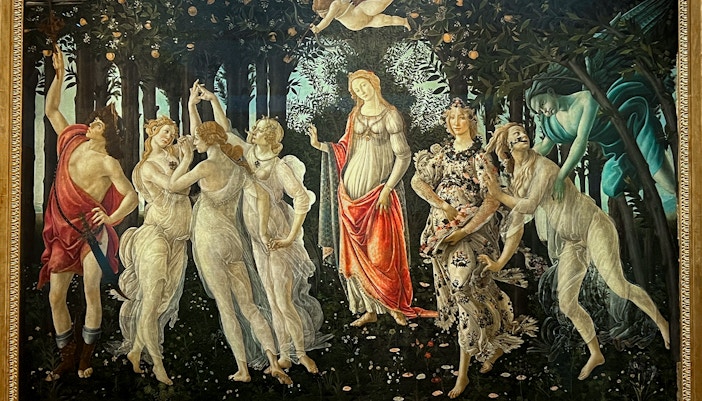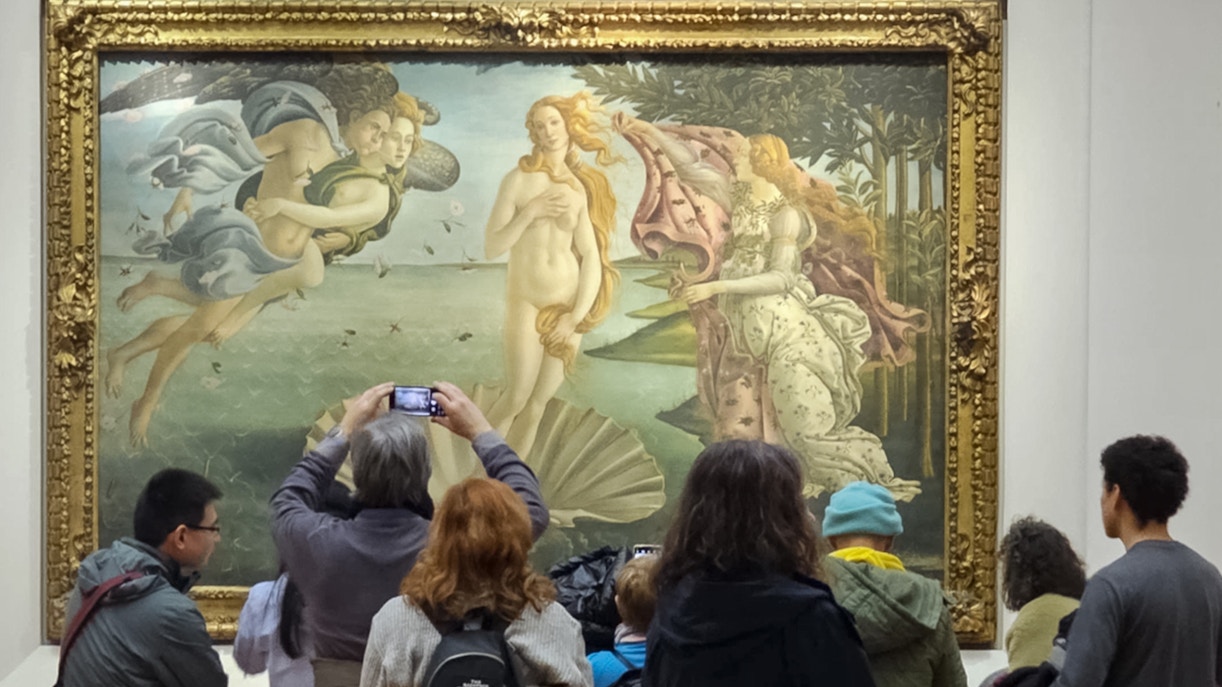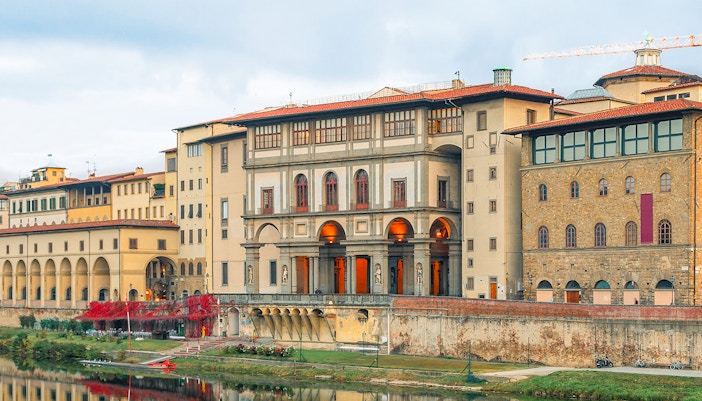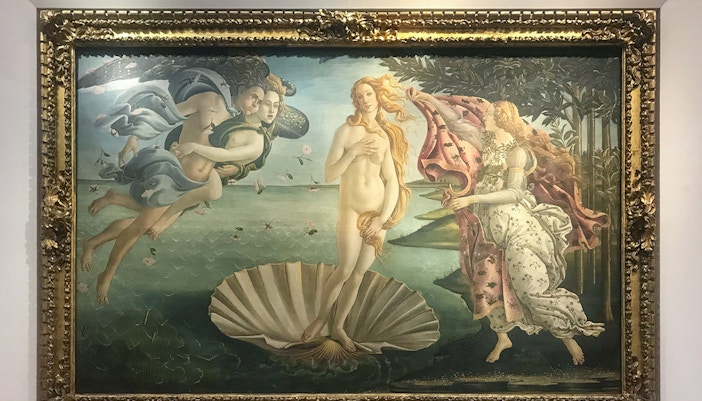- Enhance your visit with a guide: Book a guided tour or take the Uffizi audio guide to uncover the layers of symbolism: mythology, philosophy, and Medici politics all weave through this masterpiece.
- Best viewing spot: Step back a few paces and stand slightly left of center. This angle lets you take in the sweeping movement from Mercury on the left to Flora on the right without breaking the visual flow.
- Observe the details: Notice the fine transparency of the drapery, the delicate flowers embroidered on Flora’s gown, and the Three Graces’ intertwined hands. Each element carries allegorical meaning, from fertility to love’s transformations.
- Lighting effects: The soft lighting in the Botticelli Room highlights the painting’s ethereal quality. Move closer to see how the pale skin tones seem to glow against the dark grove.
- Photography tips: Photography without flash is allowed. A straight-on shot captures the full width of the scene, but zooming in on details, like Zephyrus chasing Chloris, reveals Botticelli’s storytelling brushwork.
- Best time to visit: The Botticelli Room is one of the busiest in the Uffizi. Arrive at opening time or just before closing for the best chance to admire Primavera without the crowds.






